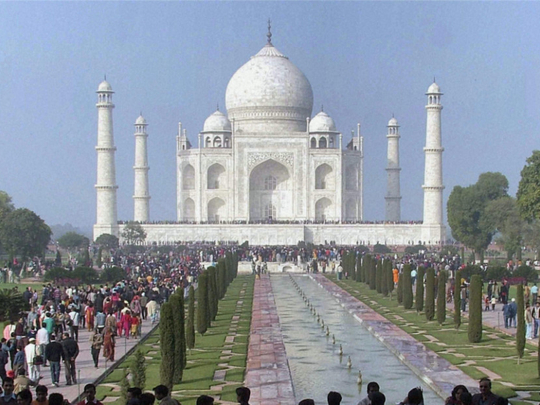
So while the rest of the world aims to make national heritage sites more accessible to locals, India has decided to take a different approach. It’s trying to lop the numbers that flock in – by multiplying ticket costs, for citizens, by five.
The Taj Mahal has occupied a contentious space in history. It’s been called ‘a teardrop on the cheek of time’; it’s been the reason many people lost their limbs. [The workers who built it had their hands chopped so the marvel could not be repeated.] It’s an ode to love, a monument to power, an annoyance to Hindutva-screaming fanatics, and a blemish on Agra’s record-keeping skills.
It is also an artefact that’s lying on the ledge of rot and ruin; with the River Yamuna drying up and what’s left of it coagulating at its shores, the foundations are getting drier and more brittle even as the authorities argue about whether to restore it or destroy it.
For many, it’s the source of their livelihood, from the chaiwallas to the minute replica makers to the guides who tout a good tour.
But the most special thing about the Taj is not the spectacle of her bathing in moonlight or the symmetrical design that draws awe.
What’s amazing about it is that is belongs as much to the Indian who makes Rs500 a month as it does to a billionaire. As much to a child who has not learnt to speak as a granny who has walked its pathways a thousand times.
It’s true, the footfall is massive, and that Indians make up the majority of the Taj Mahal’s 10,000-15,000 average daily visitors.
But is an economic barrier really the way to go? Prices have gone from Rs50 to Rs250. And that may not be much to a person who can afford a coffee in a café (at least Rs100) or to hire a car and drive down to the city (a few thousand). It is gut wrenching for someone for whom that number is a day’s pay – and of su there are many.
School children are often taken to learn about their country’s legacy in busses and a nominal charge is made – enough to cover entry and food, perhaps petrol – but this raise in entry fees, will it not deter the trips?
Do we really want to tell the young that beauty lies in the eyes of those who can pay? That national treasure it may be, but the economic strata they are from makes them second-class citizens in their own homeland?
Instead of limiting the number of people allowed in, if the gates respond to a person’s cash in hand, we’ve come to a point where we have become very, very poor indeed.








